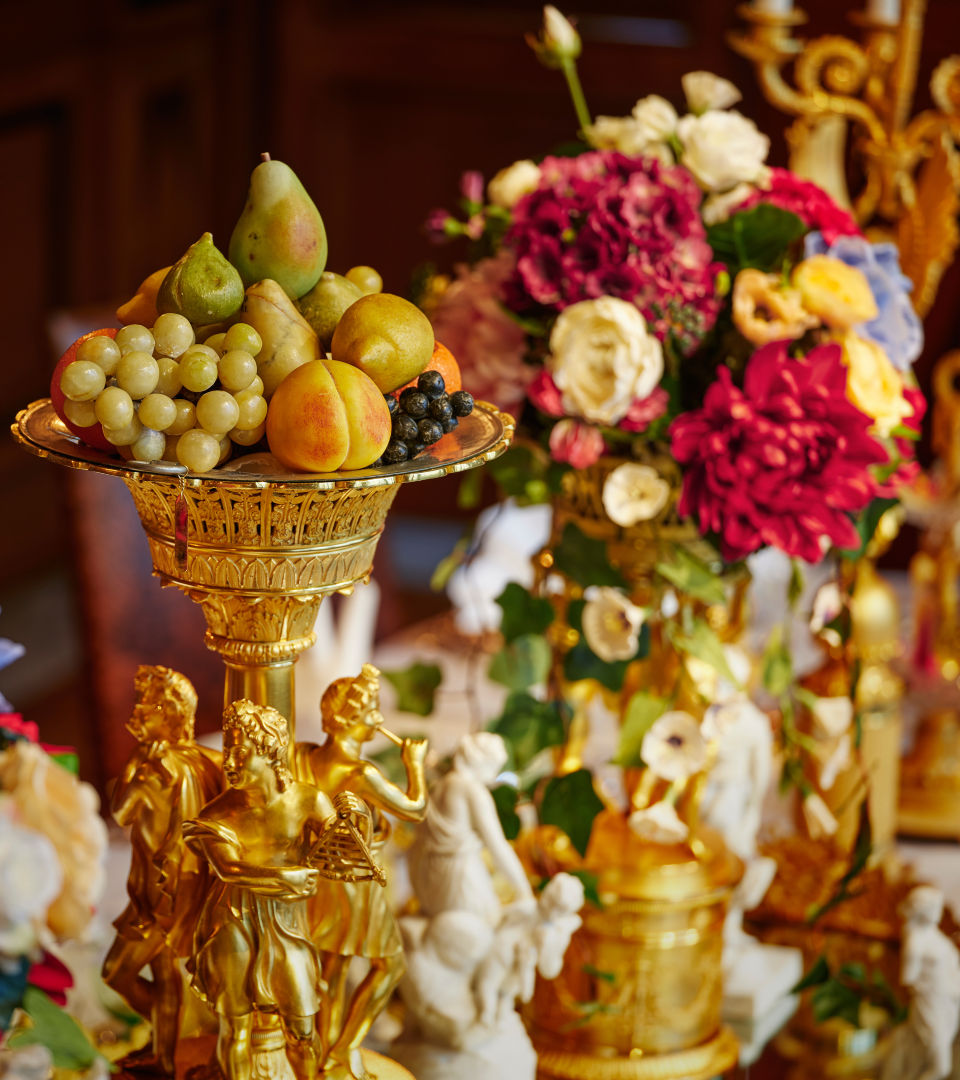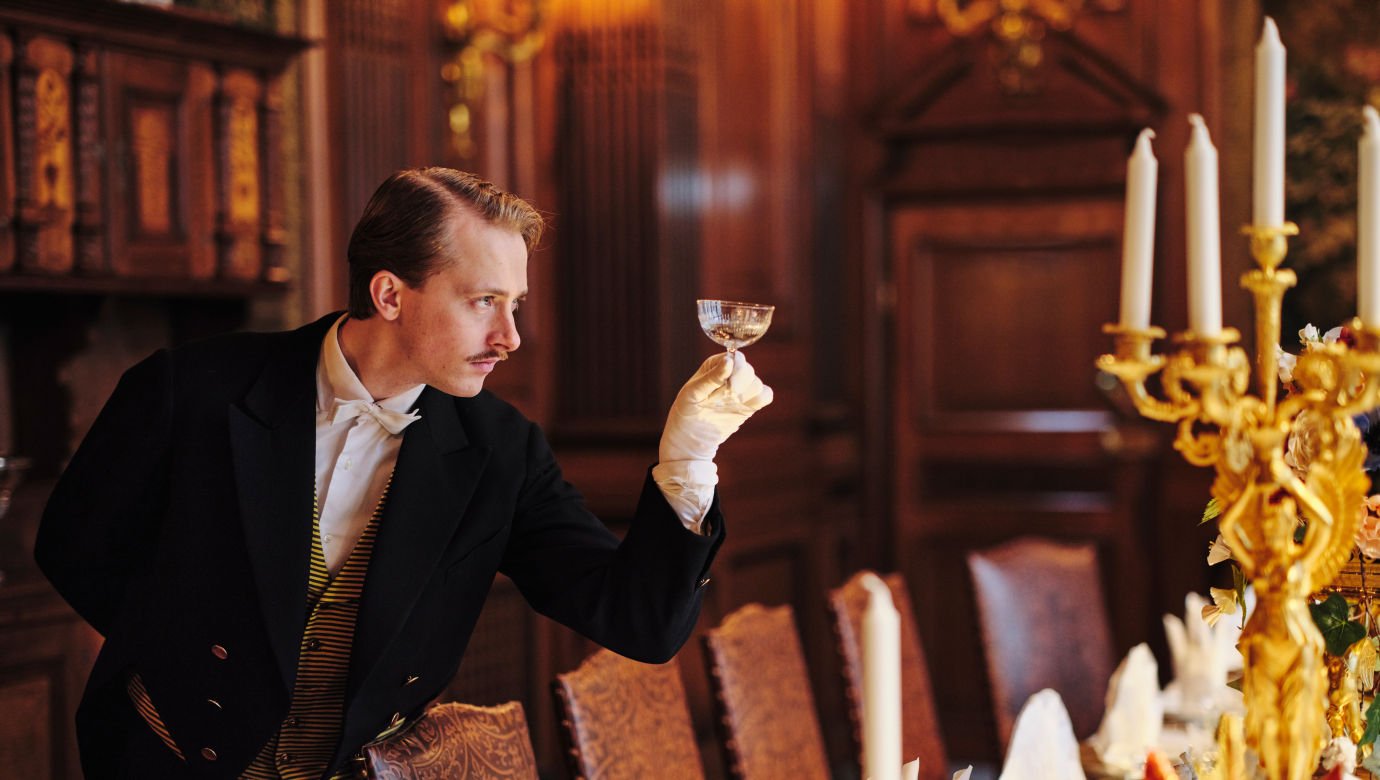
Grand Dining at Hallwyl House
Dinner parties at Hallwyl House were normally given sometime during January to March, often in February. That was when Society gathered in the capital to cement contacts and to see and be seen. The von Hallwyls usually gave two or three formal dinners a year, with a few days between them. The dinners were attended by members of the diplomatic corps, the notables of Stockholm society and sometimes even royal guests such as Crown Prince Gustaf Adolf.
Dining and Dancing
The von Hallwyls invited guests to eat on other occasions that dinners, for example at balls or musical evenings. Sometimes, they invited to balls where about 70 couples danced and were then served supper.
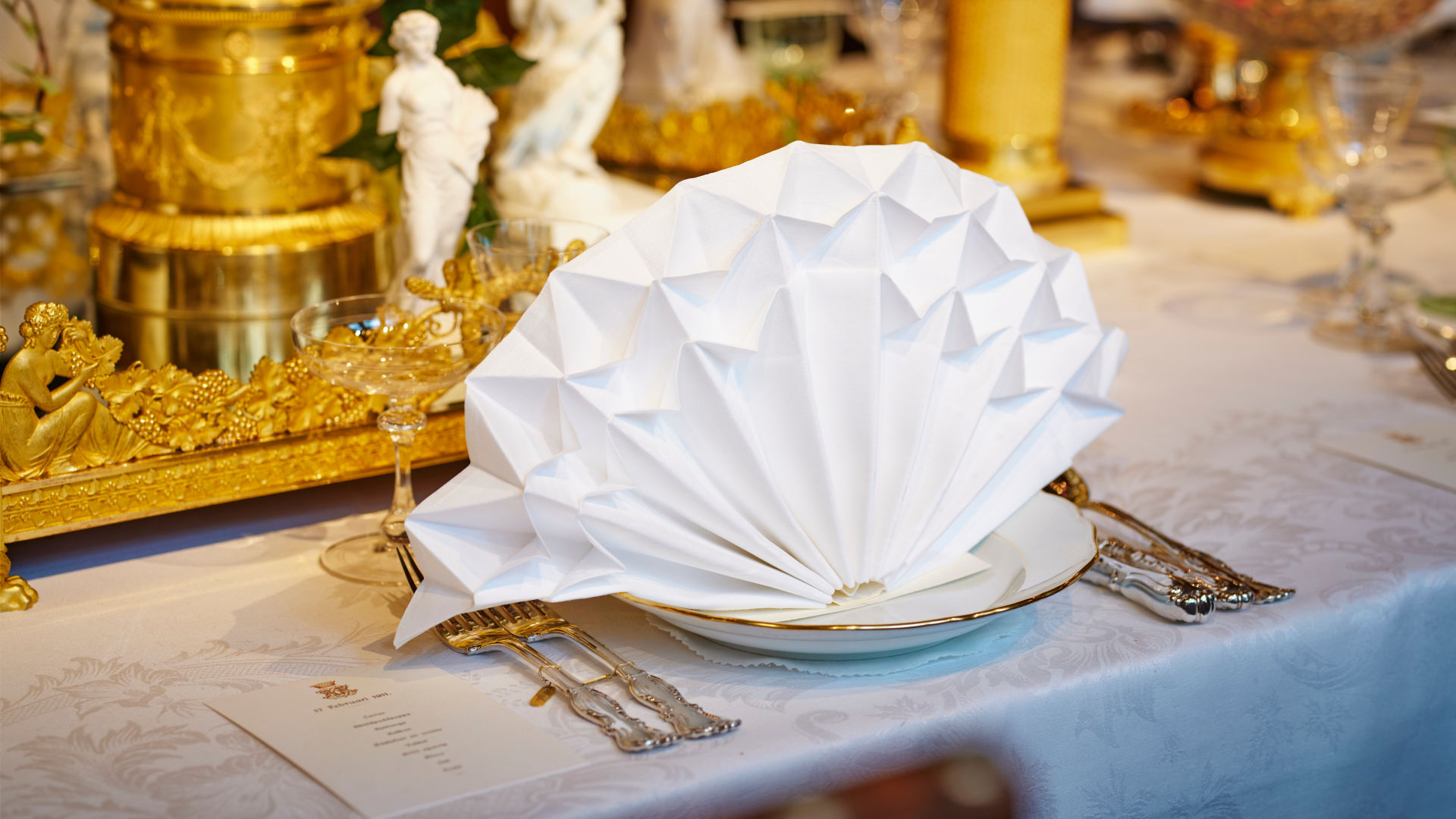
Planning and Receiving
The hostess sent out invitations well ahead of a dinner. There were also printed menus for the table, place cards etc. to be planned.
Naturally the menus were also planned well in advance. The Countess discussed suitable menus with the cook, while the choice of wines was probably decided by the Count in consultation with the butler or the footman. The same menu was normally used for the two or three annual dinners.
The male servants received the guests in the lower vestibule where the ladies and gentlemen were shown into the separate cloakrooms. The servants would hand each male guest a small card with the name of the lady that he would be taking in to dinner, and a small plan of the table showing where they would sit. In this way, the guests did not have to walk around the table looking for their place.
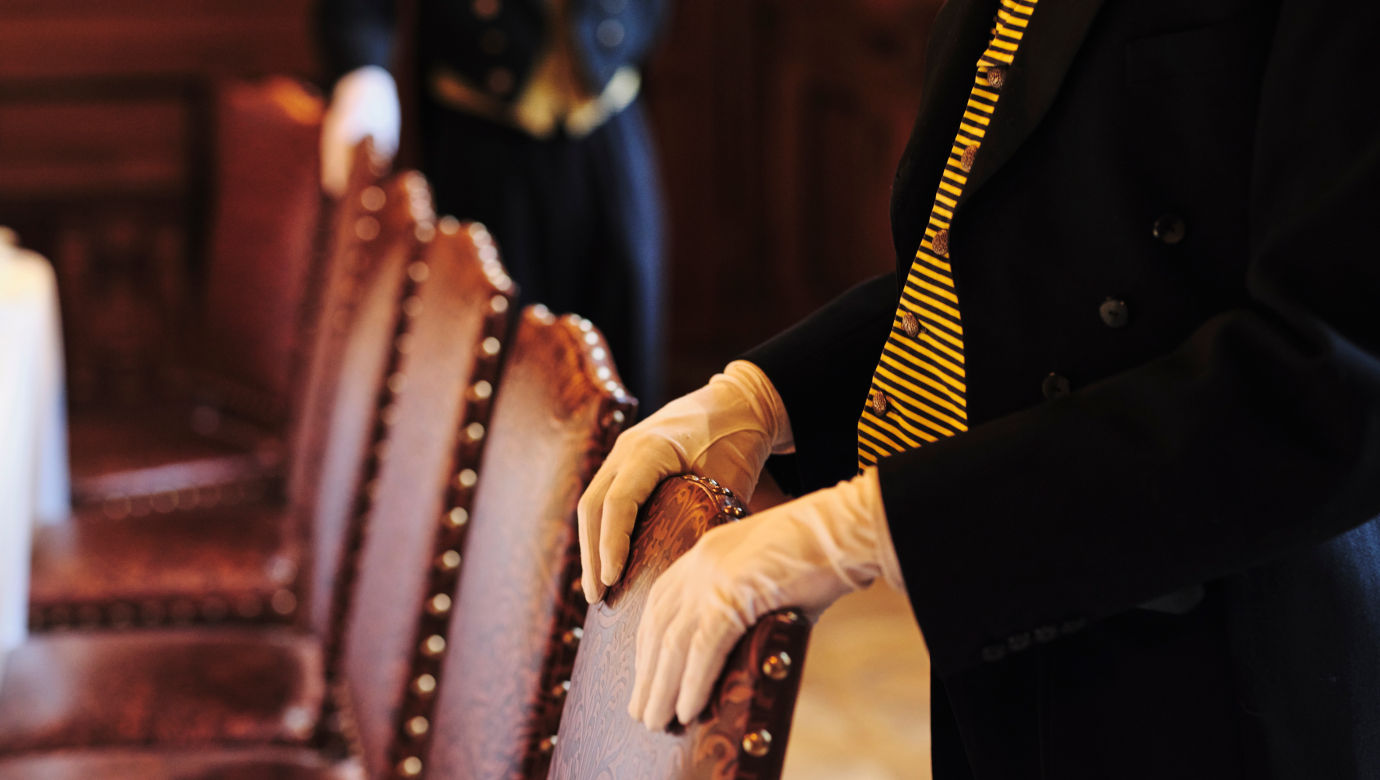
Delicacies Galore
A typical menu would consist of 9–10 dishes. Caviar or oysters to start, followed by soup. The main dishes were usually fish (sole, trout or salmon) and poultry or game (guinea fowl, pheasant, turkey or quail), but sometimes also meat (saddle of venison or mutton). Fois gras was almost always served.
The meal was normally concluded with ice cream, cheese and fruit. When the guests left the table, the servants drew back their chairs and coffee was then served in the Drawing Room.
Magnificent Table Settings
Decorating the table with silver or gilt bronze centrepieces, fruit- and flower bowls etc. became a fashion early in the 19th century as a result of changing dining customs all over Europe. The food was no longer served à la Française but à la Russe. French style service meant putting out all the dinner dishes at once, which made the table look attractively full. The Russian style, however, meant that the dishes were served one by one, which made the table look a little empty - it now had to be filled out with the decorative pieces instead.
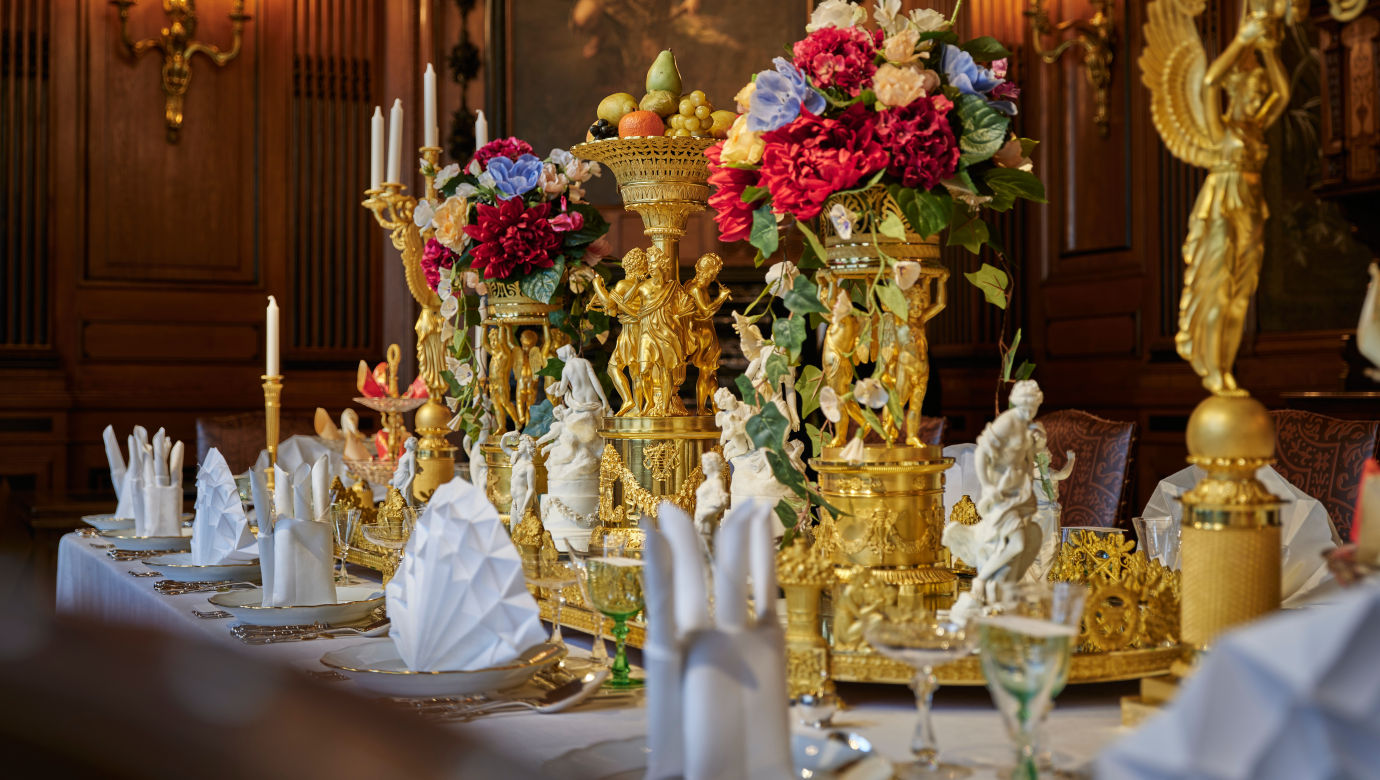
There were two sets of centrepiecees table services used for the big dinners at Hallwyl House. The large centrepiece, in the French Empire style, was bought from the antique dealer A Matsson in 1898 for 2,251 kronor, and some additional pieces from Mrs. Lilly Cadier three years later – for 8,000 kronor. This set once belonged to Dom Pedro I (Peter I), Emperor of Brazil, and his wife Amalie of Leuchtenberg, the sister of Josefina of Leuchtenberg, who married Oscar I of Sweden.
Fashionably Folded
The table settings also included beautifully folded napkins; for the present recreation the foldings “The Fan” (for the ladies) and “Crossed Rifles” (for the gentlemen) have been used. In the small showcase at the far end of the room can be seen a more flat model of folding known to have been used in Hallwyl House.
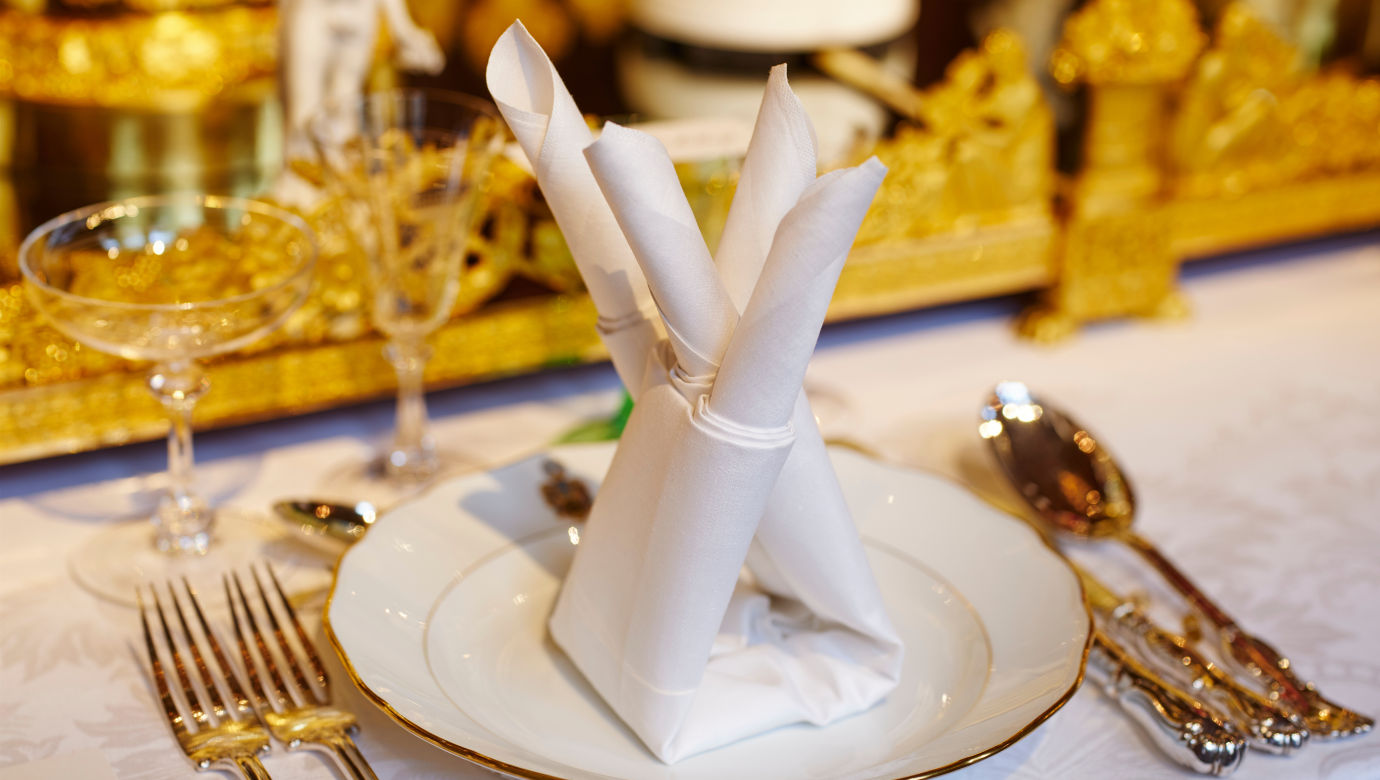
See the dressed table
The dressed table can be seen in the Hallwyl Museum’s beautiful dining room. The entry ticket, which costs SEK 120 for adults, includes a visit to this display. Children and young people up to 18 can visit the exhibition free of charge.
The display is shown February-November 2023.
Accessibility– the museum does not have a lift
The Hallwyl Museum has five floors and the dining table is on the first floor (one floor up). Since there is no lift, the space is reached via stairs.
